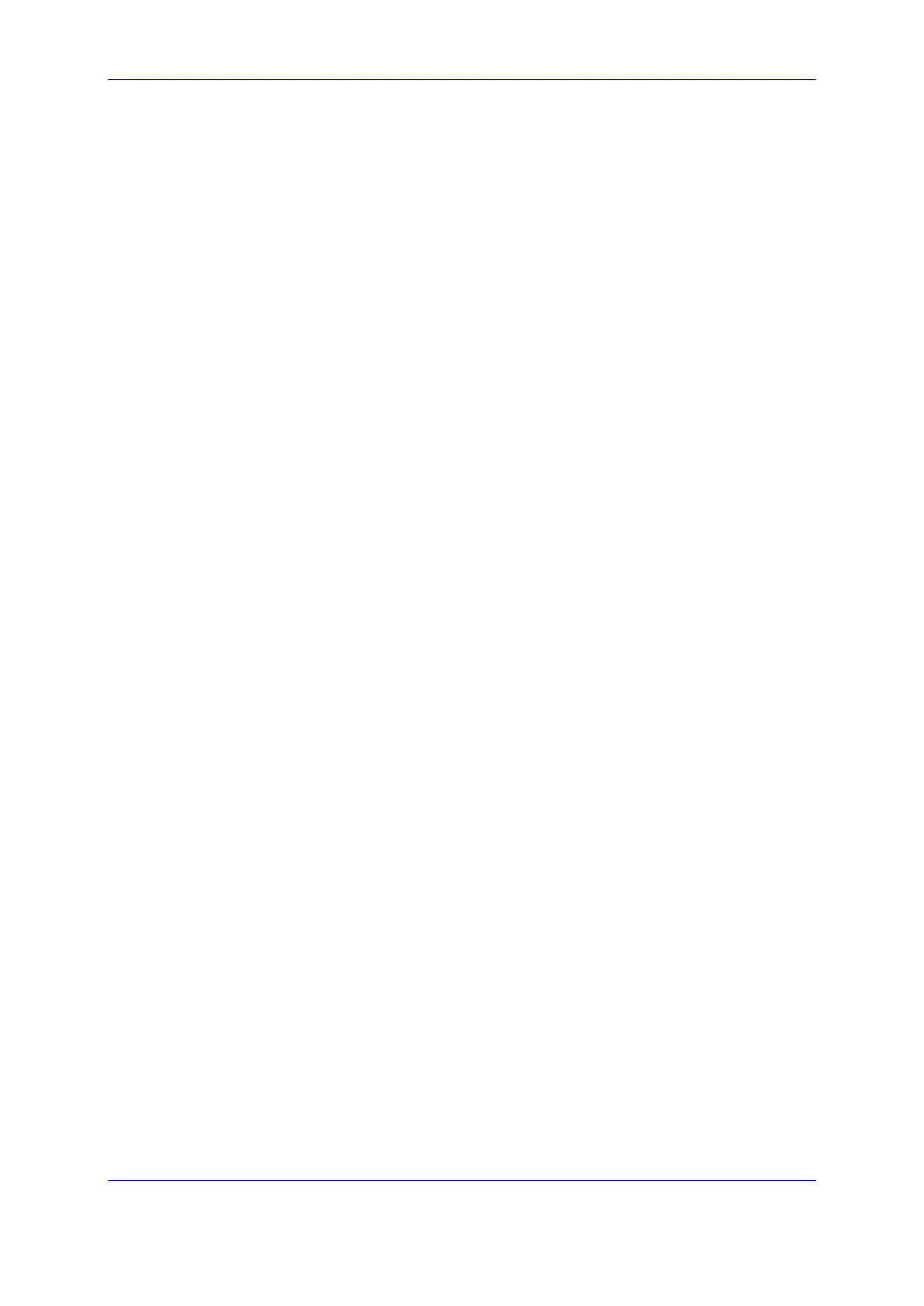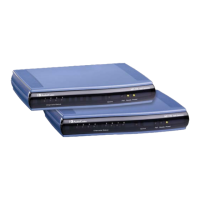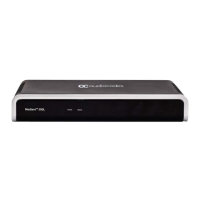Version 7.2 573 Mediant 1000B Gateway & E-SBC
User's Manual 26. Configuring Supplementary Services
• 'MWI Source Number' (MWISourceNumber): Defines the calling party's phone
number in the Q.931 MWI Setup message to PSTN.
4. Under the SMDI group, configure Simplified Message Desk Interface (SMDI):
• 'Enable SMDI' (SMDI): Enables SMDI interface on the device.
• 'SMDI Timeout' (SMDITimeOut): Defines the time (in msec) that the device waits
for an SMDI Call Status message before or after a Setup message is received.
5. Under the Digit Patterns group, configure the digit patterns used by the PBX to
indicate various services:
• 'Forward on Busy Digit Pattern Internal' (DigitPatternForwardOnBusy): Defines
the digit pattern to indicate 'call forward on busy' when the original call is received
from an internal extension.
• 'Forward on No Answer Digit Pattern Internal' (DigitPatternForwardOnNoAnswer):
Defines the digit pattern to indicate 'call forward on no answer' when the original
call is received from an internal extension.
• 'Forward on Do Not Disturb Digit Pattern Internal' (DigitPatternForwardOnDND):
Defines the digit pattern to indicate 'call forward on do not disturb' when the
original call is received from an internal extension.
• 'Forward on No Reason Digit Pattern Internal' (DigitPatternForwardNoReason):
Defines the digit pattern to indicate 'call forward with no reason' when the original
call is received from an internal extension.
• 'Forward on Busy Digit Pattern External' (DigitPatternForwardOnBusyExt):
Defines the digit pattern to indicate 'call forward on busy' when the original call is
received from an external line.
• 'Forward on No Answer Digit Pattern External'
(DigitPatternForwardOnNoAnswerExt): Defines the digit pattern to indicate 'call
forward on no answer' when the original call is received from an external line.
• 'Forward on Do Not Disturb Digit Pattern External'
(DigitPatternForwardOnDNDExt): Defines the digit pattern to indicate 'call forward
on do not disturb' when the original call is received from an external line.
• 'Forward on No Reason Digit Pattern External'
(DigitPatternForwardNoReasonExt): Defines the digit pattern to indicate 'call
forward with no reason' when the original call is received from an external line.
• 'Internal Call Digit Pattern' (DigitPatternInternalCall): Defines the digit pattern to
indicate an internal call.
• 'External Call Digit Pattern' (DigitPatternExternalCall): Defines the digit pattern to
indicate an external call.
• 'Disconnect Call Digit Pattern' (TelDisconnectCode): Defines a digit pattern that
when received from the Tel side indicates the device to disconnect the call.
• 'Digit To Ignore Digit Pattern' (DigitPatternDigitToIgnore): Defines a digit pattern
that if received as Src (S) or Redirect (R) numbers is ignored and not added to
that number.
6. Click Apply.
26.19 Converting Accented Characters from IP to Tel
The Char Conversion table lets you configure up to 40 Character Conversion rules. A
Character Conversion rule maps (converts) accented characters (Unicode / UTF-8)
received from the IP side into simple ASCII characters (ISO-8859) for sending to the Tel
side (analog or digital). Typically, the device receives the caller ID and calling name in
Unicode characters (in the SIP INVITE message). Unicode characters consist of two bytes,
while ASCII characters consist of one byte. Accented characters are used in various

